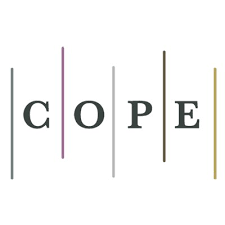Identifying and ranking key performance indicators in football clubs
DOI:
https://doi.org/10.59615/ijimes.3.2.42DOR:
https://dorl.net/dor/20.1001.1.27832678.2023.3.2.5.1Keywords:
key performance indicators, performance improvement, sports development, football clubs, sports managementAbstract
Key performance indicators are actually measurable variables based on which we can measure the success rate of an organization in reaching defined key goals. In order to create key performance indicators, steps, and standards must be passed, each of which is of great importance. Based on how the key performance indicator (KPI) is defined and determined, it is possible to measure the performance of a person, department, process, campaign, or strategic goals of a brand. In fact, KPIs can be considered for different industries and for different levels of each business. Considering the importance of football clubs and their high social impact, the purpose of this research is to investigate these key performance indicators in order to grow and improve their comprehensive performance. In order to extract data, a literature review was used. Data refinement and prioritization were done using the fuzzy decision-making method, and the opinions of active experts in clubs and football players were used. The results show that indicators based on infrastructure development are among the most important indicators and should be given special attention.
Downloads
References
Hyndman, N., & Liguori, M. (2023). ‘Be a game changer and keep the ball rolling’: exploring linkages between football clubs, charitable foundations and doing good. Accounting, Auditing & Accountability Journal, (ahead-of-print).
Gong, B., Zhou, C., Gómez, M. Á., & Buldú, J. M. (2023). Identifiability of Chinese football teams: A complex networks approach. Chaos, Solitons & Fractals, 166, 112922.
Herold, D. M., Harrison, C. K., & Bukstein, S. J. (2023). Revisiting organizational identity and social responsibility in professional football clubs: the case of Bayern Munich and the Qatar sponsorship. International journal of sports marketing and sponsorship, 24(1), 56-73.
Toma, P., & Campobasso, F. (2023). Using data analytics to capture the strategic and financial decision-making of Europe's top football club. Technological Forecasting and Social Change, 186, 122116.
Oliva-Lozano, J. M., Martínez-Puertas, H., Fortes, V., López-Del Campo, R., Resta, R., & Muyor, J. M. (2023). Is there any relationship between match running, technical-tactical performance, and team success in professional soccer? A longitudinal study in the first and second divisions of LaLiga. Biology of Sport, 40(2).
Hughes, M., Caudrelier, T., James, N., Redwood-Brown, A., Donnelly, I., Kirkbride, A., & Duschesne, C. (2012). Moneyball and soccer-an analysis of the key performance indicators of elite male soccer players by position. Journal of Human Sport and Exercise, 7(2), 402-412.
Zhou, W., Yu, G., You, S., & Wang, Z. (2023). An Improved Passing Network for Evaluating Football Team Performance. Applied Sciences, 13(2), 845.
Wing, C. E., Turner, A. N., & Bishop, C. J. (2020). Importance of strength and power on key performance indicators in elite youth soccer. The Journal of Strength & Conditioning Research, 34(7), 2006-2014.
Brito de Souza, D., López-Del Campo, R., Blanco-Pita, H., Resta, R., & Del Coso, J. (2019). An extensive comparative analysis of successful and unsuccessful football teams in LaLiga. Frontiers in Psychology, 10, 2566.
Modric, T., Versic, S., Sekulic, D., & Liposek, S. (2019). Analysis of the association between running performance and game performance indicators in professional soccer players. International journal of environmental research and public health, 16(20), 4032.
Gamble, D., Bradley, J., McCarren, A., & Moyna, N. M. (2019). Team performance indicators which differentiate between winning and losing in elite Gaelic football. International Journal of Performance Analysis in Sport, 19(4), 478-490.
Toukabri, M., & Toukabri, M. (2022). Football industry accounting as a social and organizational practice: from the implementation of the CSR process to integrated reporting. Systemic practice and action research, 1-29.
Perechuda, I., & Čater, T. (2022). Influence of stakeholders' perception on value creation and measurement: the case of football clubs. Sport, Business and Management: An International Journal, 12(1), 54-76.
Mourad, N., Assem Tharwat, D., Habib, A. M., Wafik, D., & Hamed, M. A. (2022). Appraising the economic efficiency of European football teams: Evidence from covid-19 crisis using data envelop analysis. Journal of Positive School Psychology, 6(8), 4383-4403.
Nozari, H., Szmelter-Jarosz, A., & Ghahremani-Nahr, J. (2022). Analysis of the Challenges of Artificial Intelligence of Things (AIoT) for the Smart Supply Chain (Case Study: FMCG Industries). Sensors, 22(8), 2931.
Aliahmadi, A., Nozari, H., & Ghahremani-Nahr, J. (2022). AIoT-based sustainable smart supply chain framework. International journal of innovation in management, economics and social sciences, 2(2), 28-38.
Tavakkoli-Moghaddam, R., Ghahremani-Nahr, J., Samadi Parviznejad, P., Nozari, H., & Najafi, E. (2022). Application of internet of things in the food supply chain: a literature review. Journal of applied research on industrial engineering, 9(4), 475-492.
Nozari, H., Fallah, M., Szmelter-Jarosz, A., & Krzemiński, M. (2021). Analysis of security criteria for IoT-based supply chain: a case study of FMCG industries. Central European Management Journal, 29(4).
Published
How to Cite
Issue
Section
License
Copyright (c) 2023 Kianoush Rahmaty

This work is licensed under a Creative Commons Attribution 4.0 International License.












